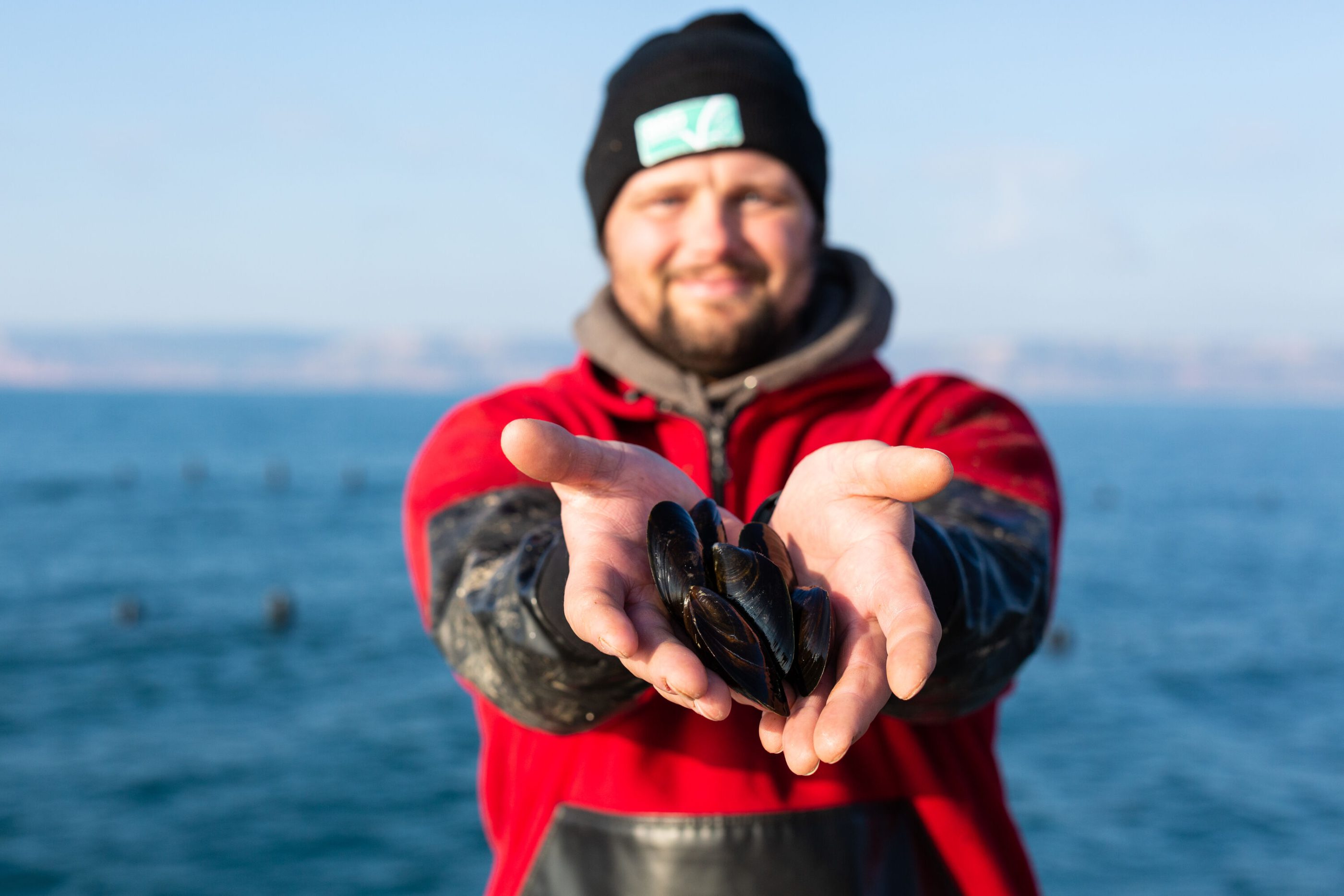
How does salmon get its colour?
December 21, 2022
Whether on the supermarket shelves or at the fish counter, salmon stands out for its rich, pinkish-orange colour. Where does this distinctive colour come from? Is it natural or artificial?
What’s the real colour of farmed salmon?
Do farm raised salmon and wild salmon have different colours? To answer this question, we must first take a look at the salmon’s food chain.
Salmon is a predator, it eats smaller fish, krill and other small crustacea. These crustacea in turn feed off algae. This is where the colour comes in. Certain algae produce a plant pigment called astaxanthin.
If and when they later end up in the stomachs of predators, these will also take on the colour of astaxanthin. So astaxanthin is the reason why crustacea, and also salmon and flamingos, are naturally the colour that they are.

Flamingoes are pink for the same reason as salmon.
Are farmed salmon grey?
So we now know that astaxanthin is the reason for salmon’s beautiful colour. Without this plant pigment, these predatory fish would be white or grey.
In the wild, salmon consumes this pigment naturally from the food it eats. Farmers need to provide farm raised salmon with the same nutrients they would get in the wild. It wouldn’t be healthy for the fish to be given the wrong food. That’s why astaxanthin is added to the food of farmed salmon. You can find out more here about how farmed fish can be fed responsibly.
Astaxanthin is an antioxidant that protects algae against stress, such as from strong sunlight or lack of nutrients. Animals that eat those algae consequently ingest this pigment. It’s part of a group of chemicals called carotenoids, which are also found in carrots and tomatoes. It’s not just good for salmon, but also for humans.
Antioxidants neutralise unstable molecules (free radicals) and prevent oxidation in the cell. Do you want to try a little experiment to observe how antioxidants work? Cut open an apple. The oxidation caused by the oxygen-rich air quickly turns the apple brown. However, if you squeeze lemon juice onto the cut sides of the apple, they retain their fresh colour. This is because the vitamin C in lemon juice is also an antioxidant.

Lemon juice is an antioxidant that can stop a sliced apple turning brown.
Is farmed salmon dyed?
Astaxanthin is added to the food of farmed salmon because they need these nutrients but can’t hunt krill and shrimp like wild salmon do. It’s part of the process of raising healthy salmon. There is no before or after, because there is no part of the farming process that calls for salmon to be dyed.
There is also a common myth that farmed salmon are injected with dye – that’s not true. Read all about this myth here.
What’s the real colour of farmed salmon?
Salmon can have different colours – that’s true for farmed and wild salmon. Different species of salmon have different colours because of their diets and because their genetics affect how they break down the nutrients in their food.
In the wild, Coho salmon are less pink than other species because their diet includes less astaxanthin-containing zooplankton and more small fish. Some Chinook salmon, also called king salmon, are naturally white, because they can’t process astaxanthin.
The colour of salmon meat can vary from almost white to deep red. The colour of salmon doesn’t tell you whether it is wild-caught or farmed.

Salmon comes in many different shades of pink, red, orange and even white.
So to summarise:
- The typical salmon colour comes from the plant pigment astaxanthin, an antioxidant
- Without this pigment, salmon meat would be white or grey
- Wild salmon take in astaxanthin from eating crustacea, while farmed salmon have it mixed in with their food
Have we given you an appetite for some succulent salmon? Try these recipes to show off the beautiful colour of salmon on your plate!
What does the ASC do?
The goal of ASC is to make fish farming more sustainable. We are doing this by setting strict standards for ecological and socially responsible farming. There are also strict criteria for the feed that is used. All its ingredients must originate from a responsible source and be fully traceable. This applies to fishmeal and fish oil in the same way as to soya or wheat. You will recognise responsibly farmed and fed fish in the supermarket by the ASC seal.



